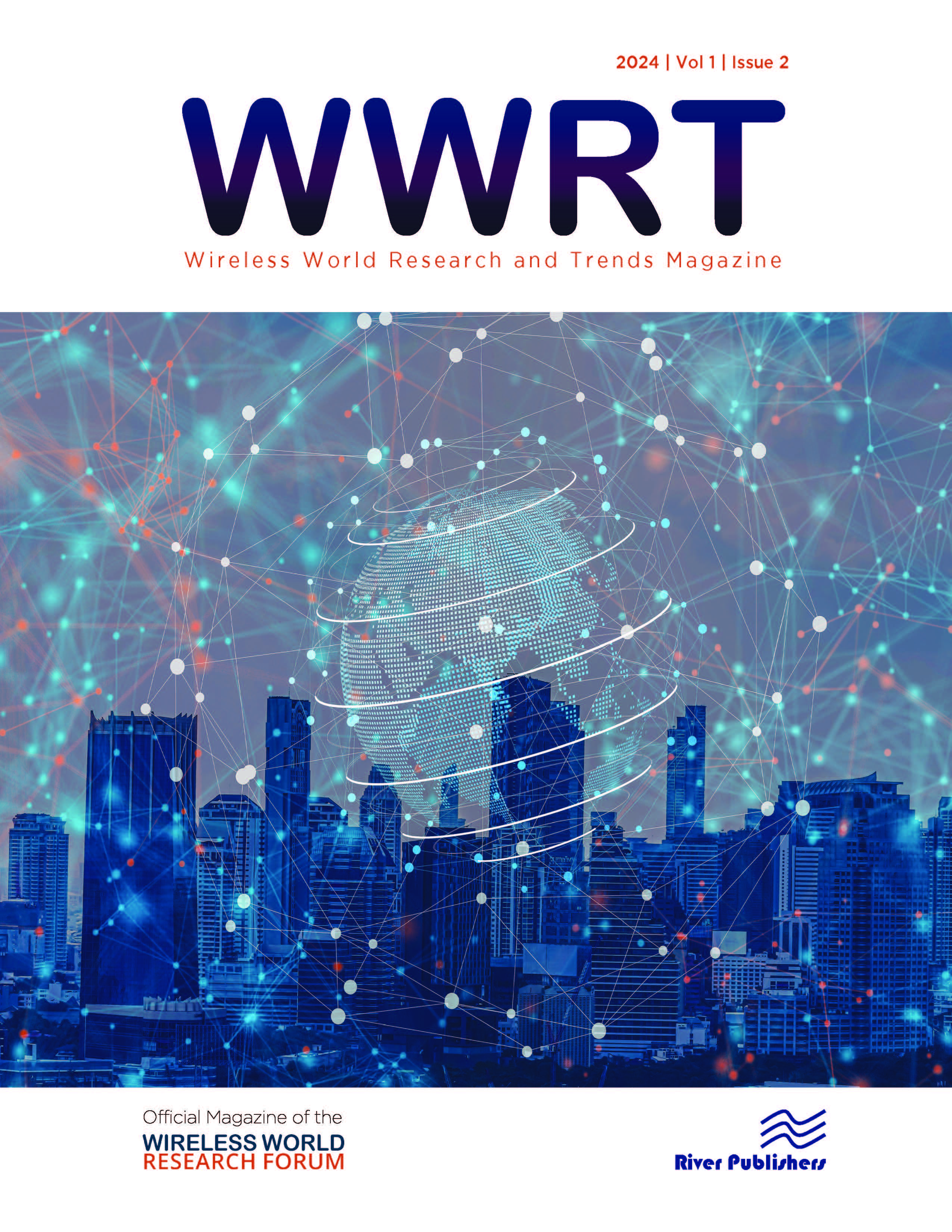Abstract
Spectrally Efficient Frequency Division Multiplexing (SEFDM) aims to enhance spectral efficiency by compressing subcarriers in the frequency domain, thereby reducing the required bandwidth. This approach primarily focuses on minimizing Inter-Carrier Interference (ICI), which typically necessitates a complex receiver design. We propose a simpler receiver design based on Spectral Sampling and Signal Decomposition (SSSD) technique. This technique facilitates the receiver to process Orthogonal Frequency Division Multiplexing (OFDM) signals outside the conventional orthogonality points in the frequency domain. Unlike traditional SEFDM approaches, the SSSD receiver utilizes interfering carriers as useful signals. Through simulations, we showcase the SSSD receiver’s performance in extracting SEFDM signals and accommodating various pulse shapes beyond the conventional sinc pulse. However, our results also highlight a significant challenge posed by severely ill-conditioned matrices, which can be mitigated by exploring alternative pulse types.
References
E. Selvamanju and V. B. Shalini, “Archimedes Optimization Algorithm with Deep Belief Network Based Mobile Network Traffic Prediction for 5G Cellular Networks,” in 2022 4th International Conference on Smart Systems and Inventive Technology (ICSSIT), Jan. 2022, pp. 370–376. 10.1109/ICSSIT53264.2022.9716552.
S. Smys, J. I. Z. Chen, and S. Shakya, “Survey on neural network architectures with deep learning,” Journal of Soft Computing Paradigm (JSCP), vol. 2, no. 03, pp. 186–194, 2020.
Ericsson, “Ericsson Mobility Report,” Stockholm, Sweden, Nov. 2023. Accessed: Mar. 30, 2024. [Online]. Available: https://www.ericsson.com/en/reports-and-papers/mobility-report/reports/november-2023.
J. G. Andrews et al., “What Will 5G Be?,” IEEE Journal on Selected Areas in Communications, vol. 32, no. 6, pp. 1065–1082, Jun. 2014, 10.1109/JSAC.2014.2328098.
F. Boccardi, R. Heath, A. Lozano, T. L. Marzetta, and P. Popovski, “Five disruptive technology directions for 5G,” IEEE Communications Magazine, vol. 52, no. 2, pp. 74–80, 2014.
M. J. Marcus, “ITU WRC-19 Spectrum Policy Results,” IEEE Wireless Communications, vol. 26, no. 6, pp. 4–5, Dec. 2019, 10.1109/MWC.2019.8938175.
Y. Yang, B. Bai, and W. Chen, “Spectrum Reuse Ratio in 5G Cellular Networks: A Matrix Graph Approach,” IEEE Transactions on Mobile Computing, vol. 16, no. 12, pp. 3541–3553, Dec. 2017, 10.1109/TMC.2017.2696005.
D. Verenzuela and G. Miao, “Scalable D2D Communications for Frequency Reuse ≫
in 5G,” IEEE Transactions on Wireless Communications, vol. 16, no. 6, pp. 3435–3447, Jun. 2017, 10.1109/TWC.2017.2679001.
M. K. Singh, S. Vittal, and A. Antony Franklin, “SERENS: Self Regulating Network Slicing in 5G for Efficient Resource Utilization,” in 2020 IEEE 3rd 5G World Forum (5GWF), Sep. 2020, pp. 590–595. 10.1109/5GWF49715.2020.9221405.
H.-H. Chang, L. Liu, and Y. Yi, “Deep Echo State Q-Network (DEQN) and Its Application in Dynamic Spectrum Sharing for 5G and Beyond,” IEEE Transactions on Neural Networks and Learning Systems, vol. 33, no. 3, pp. 929–939, Mar. 2022, 10.1109/TNNLS.2020.3029711.
GSMA, “The 5G Guide a Reference for Operators,” Apr. 2019. Accessed: Jul. 30, 2020. [Online]. Available: https://www.gsma.com/wp-content/uploads/2019/04/The-5G-Guide_GSMA_2019_04_29_compressed.pdf.
M. Ramesh, C. G. Priya, and V. P. M. B. A. A. Ananthakirupa, “Design of efficient massive MIMO for 5G systems – Present and past: A review,” in 2017 International Conference on Intelligent Computing and Control (I2C2), Jun. 2017, pp. 1–4. 10.1109/I2C2.2017.8321950.
M. R. Rodrigues and I. Darwazeh, “Fast OFDM: A proposal for doubling the data rate of OFDM schemes,” Proceeding of the International Conference on Telecommunications, pp. 484–487, Jun. 2002.
J. B. Anderson, “Faster-than-Nyquist Signaling for 5G Communication,” in Signal Processing for 5G: Algorithms and Implementations, F. Luo and C. Zhang, Eds., Wiley-IEEE Press, 2016, pp. 24–46.
I. Darwazeh, T. Xu, and R. C. Grammenos, “Bandwidth-compressed multicarrier communication: SEFDM,” in Signal Processing for 5G: Algorithms and Implementations, F. Luo and C. Zhang, Eds., Wiley-IEEE Press, 2017, pp. 90–114.
M. R. D. Rodrigues and I. Darwazeh, “A Spectrally Efficient Frequency Division Multiplexing Based Communication System,” in Proceedings of the 8th International OFDM-Workshop (InOWo’03), no, 2003, pp. 70–74,.
S. Isam, I. Kanaras, and I. Darwazeh, “A Truncated SVD approach for fixed complexity spectrally efficient FDM receivers,” in 2011 IEEE Wireless Communications and Networking Conference, WCNC 2011, 2011.
T. Xu, R. C. Grammenos, F. Marvasti, and I. Darwazeh, “An improved fixed sphere decoder employing soft decision for the detection of non-orthogonal signals,” IEEE Communications Letters, vol. 17, no. 10, pp. 1964–1967, 2013.
I. Kanaras, A. Chorti, M. R. Rodrigues, and I. Darwazeh, “A fast constrained sphere decoder for ill conditioned communication systems,” IEEE Communications Letters, vol. 14, no. 11, pp. 999–1001, 2010.
S. Isam and I. Darwazeh, “Design and performance assessment of fixed complexity spectrally efficient FDM receivers,” in IEEE Vehicular Technology Conference, 2011.
T. Xu and I. Darwazeh, “A soft detector for spectrally efficient systems with non-orthogonal overlapped sub-carriers,” IEEE Communications Letters, vol. 18, no. 10, pp. 1847–1850, 2014.
S. Mikroulis, T. Xu, J. E. Mitchell, and I. Darwazeh, “First demonstration of a spectrally efficient FDM radio over fiber system topology for beyond 4G cellular networking,” in 2015 20th European Conference on Networks and Optical Communications, NOC 2015, 2015.
B. H. Mohammed and S. Mohan, “Highly Immune-Orthogonal Frequency Division Multiplexing (HI-OFDM),” Submitted to IEEE Access, Aug. 2024.

